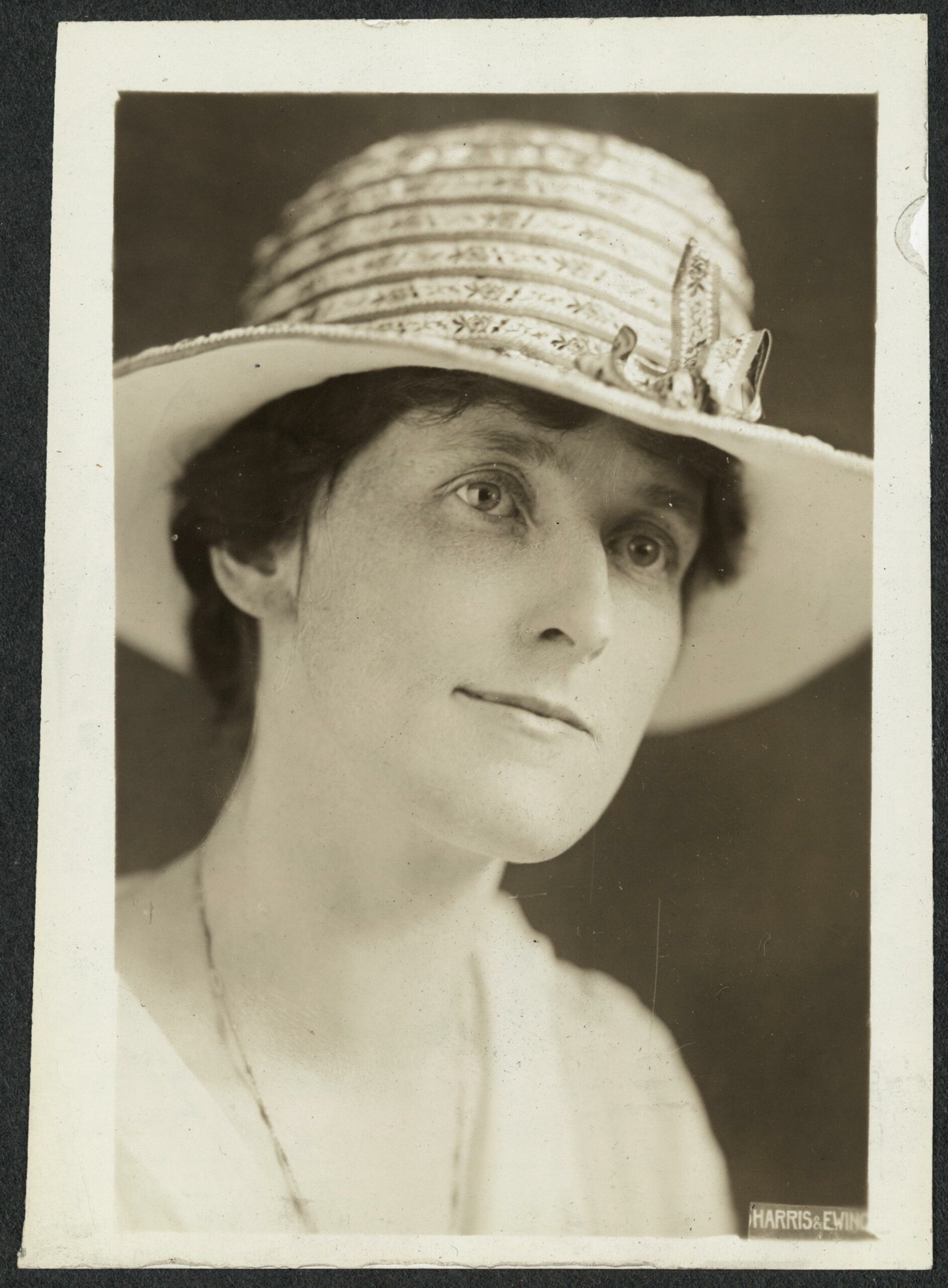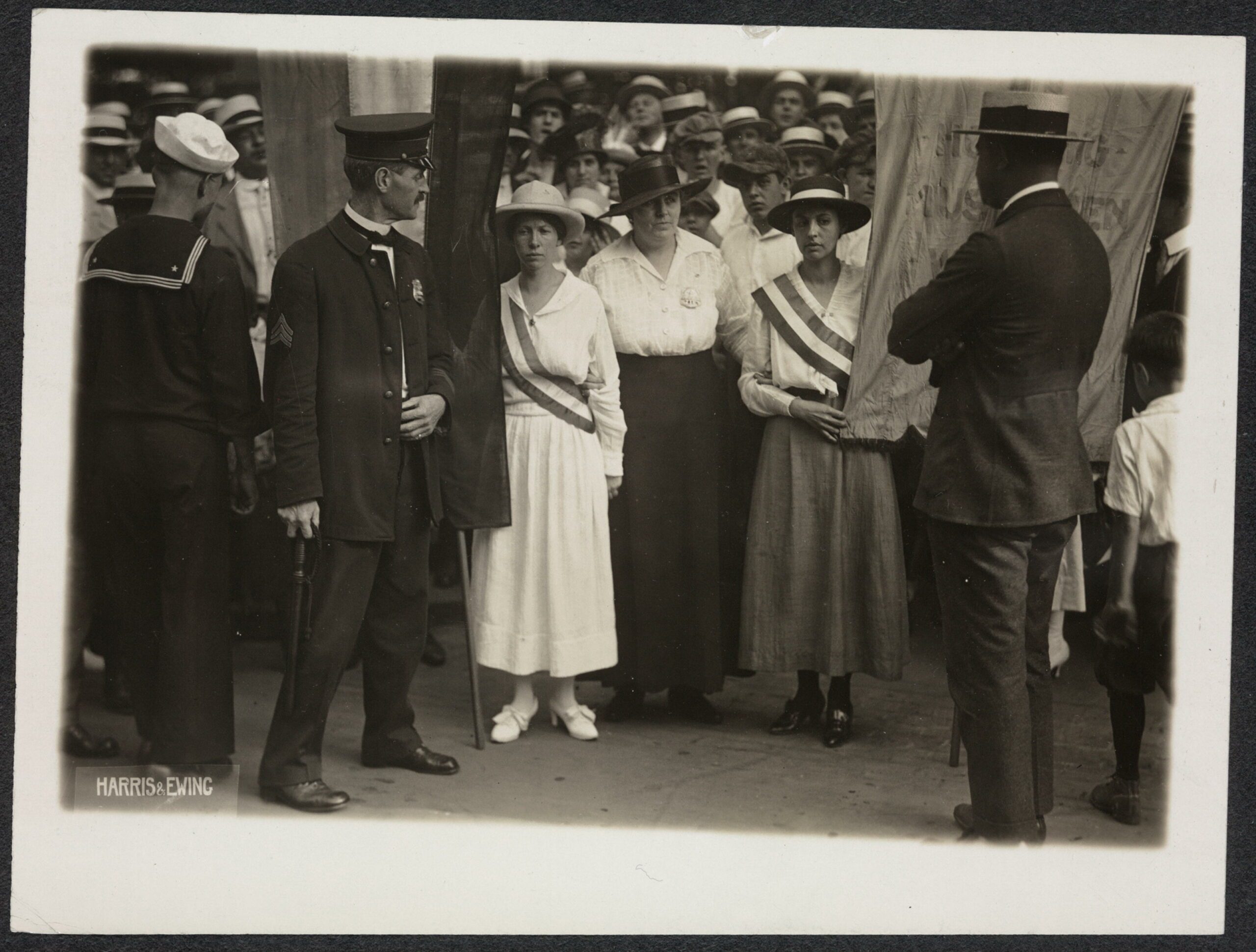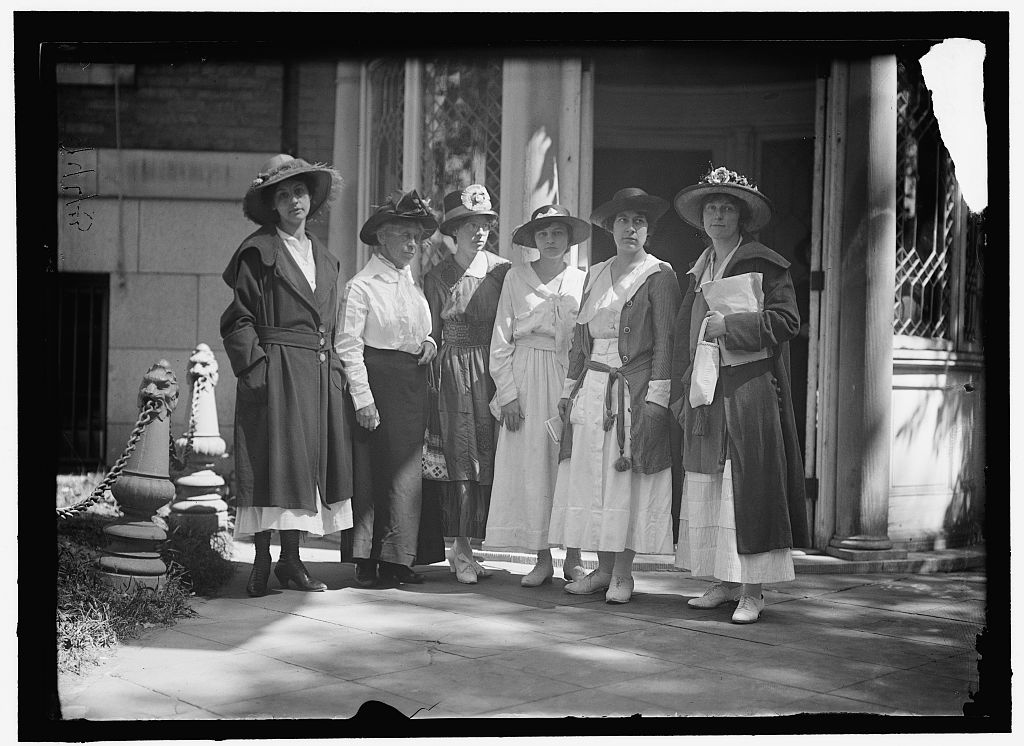In this blog post, CHM curatorial intern Divya Pai recounts the work of Lucy Hyde Ewing and Madeline Upton Watson as part of a series in which we share the stories of local women who made history in anticipation of an exhibition about Chicago women and the vote.
The fight for women’s suffrage in Chicago started in the 1860s and saw victory in 1913 when the Illinois legislature passed a bill that was supposed to give all women the right to vote in local and presidential elections. The work continued for passage of a constitutional amendment that would grant women suffrage nationwide.
The Silent Sentinels were a group of suffragists organized by the National Woman’s Party (NWP) who began picketing outside the White House on January 10, 1917, in response to president Woodrow Wilson’s dismissive suggestion that they “concert public opinion” about the vote. The Silent Sentinels held signs with messages such as “Mr. President how long must women wait for liberty.”
After daily silent protests and facing antisuffragists who shouted insults, threw fruit, and tore their banners, the first arrests came in June 1917. Two of the women arrested in these protests were from Chicago.

Portrait of Ewing, c. 1915. Photograph by Harris & Ewing, Library of Congress
Lucy Hyde Ewing was born in 1885 in Chicago into a political family. Adlai Stevenson, her first cousin once removed, served as vice president under president Grover Cleveland. The Stevenson family would become a prominent political family in Illinois and at the national level.
Ewing was arrested on charges of obstructing traffic for picketing with a banner. She was among the first groups of protesters to receive an unpardoned prison sentence and served thirty days at Occoquan Workhouse in Lorton, Virginia.
Madeline Upton Watson, who was also born in 1885 in Illinois, served as the treasurer of the Illinois branch of the NWP. She was arrested twice, first for picketing the White House in August 1917 and again in 1918 for her participation in the Lafayette Square meetings, which took place to protest the Senate’s inaction on the proposed suffrage amendment. She served time in Occoquan for both arrests.

August 1917 arrest of White House picketers Catherine Flanagan (left), and Madeline Watson (right). Photograph by Harris & Ewing,Library of Congress
The Chicago Tribune reported that after Watson’s first arrest, she commented, “Three policemen were allotted to protect us from a mob of 3,000 yesterday. Forty policemen were sent out to make arrests today. . . . Trial at 9:30 Saturday morning. We defend ourselves.”
Ewing’s and Watson’s treatment at Occoquan is described in Jailed for Freedom by Doris Stevens, who herself served three days. Ewing was among the women whose mail was withheld and read by prison matrons, while Watson was allowed a single letter, likely because she had a ten-year-old child. The prisoners were given a diet of unsanitary drinking water, sour bread, and rancid soup and made to perform prison work. Those who refused were put in solitary confinement.
Word of these poor conditions at Occoquan reached Illinois senator J. Hamilton Lewis, who traveled to Virginia to visit Watson and Ewing. After seeing the conditions, he was reported to have said: “I have never seen prisoners so badly treated, either before or after conviction.” Though he offered to negotiate for their release, all the imprisoned women said they would rather stay at Occoquan for a year than cease picketing and give up their cause.

Madeline Watson (far left) and Lucy Ewing (far right) with a group of suffragists, c. 1917. Photograph by Harris & Ewing, Library of Congress
In February 1919, Ewing went on the “prison special” tour while serving as chairman of the NWP. She wore her prison uniform and gave speeches on voting rights and her experience in Occoquan.
Following ratification of the Nineteenth Amendment, the NWP turned its fight toward full constitutional equality for women and continues to provide education on the women’s rights movement.